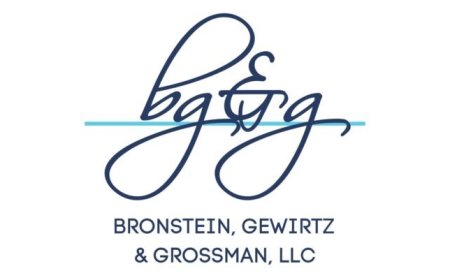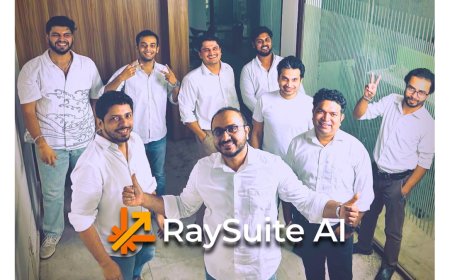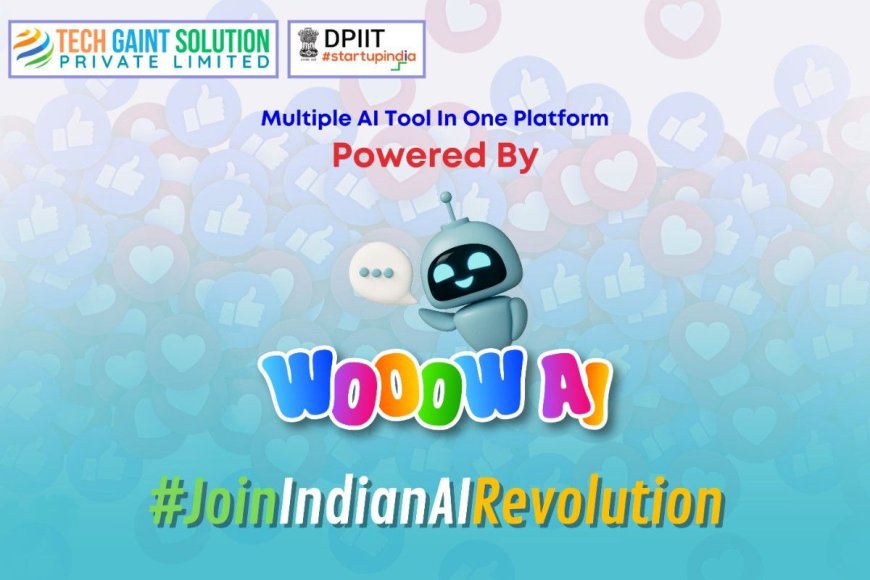Anand Singh Highlights DAECC AI Framework for Accountable and Sustainable Enterprise Use
New Delhi [India], November 7: Enterprise AI Takes a New Turn with the Introduction of DAECC Framework. Agentic artificial intelligence (AI)has introduced a new architecture. The perspective was aiming to reshape enterprises operating in regulated sectors. They can now better adopt and manage intelligent systems. The Dynamic Agent Extension and Contextual Communication (DAECC) framework has [...]


New Delhi [India], November 7: Enterprise AI Takes a New Turn with the Introduction of DAECC Framework. Agentic artificial intelligence (AI)has introduced a new architecture. The perspective was aiming to reshape enterprises operating in regulated sectors. They can now better adopt and manage intelligent systems. The Dynamic Agent Extension and Contextual Communication (DAECC) framework has been introduced as a response to long-standing concerns around adaptability, explainability, and sustainability in enterprise AI. The framework is specifically designed to serve industries where accountability is non-negotiable, including healthcare, pharmaceuticals, and mental health care. It proposes a structured way for AI to function with flexibility while remaining transparent and auditable.
A New Architecture for Enterprise AI
The DAECC framework is based on the deployment of multiple specialised agents, each entrusted with a dedicated role. These roles may include planning, compliance, or communication, and together they form an adaptive and modular system. Unlike conventional AI systems that attempt to manage every function under a single model, DAECC opts for a distributed approach.
At the heart of this design is the Adaptive Agent Extension Mechanism (AAEM). The AAEM determines whether the existing agent can adapt to new contexts or if a new agent needs to be created. This is not an isolated automated decision — humans must be kept in the loop, and their approvals are mandatory. This brings both accountability and transparency. Enterprises now are expressing greater confidence in AI-driven decisions.
The introduction of SEFCom (Sustainable Enterprise Framework for Communication), a lightweight protocol, is another step in the right direction. With its compact encoding and pre-compiled patterns, the computational load is substantially reduced. Early evaluations indicate that this reduces energy consumption by up to 40% in agent-to-agent communication.
The bottom line: addressing multiple concerns regarding the environmental footprint created by large-scale AI systems.
The Contextual Model Interaction Protocol (CMIP) is another welcome feature. This allows agents to negotiate tasks amongst themselves, with outcomes recorded on a secure blockchain ledger. This traceability with compliance presents the decision-making process with an auditable trail.
An Innovative Application in Healthcare
The first live demonstration of this concept comes through MindRewire Therapy, a mental health application combining patient feedback, psychological metrics, and physiological signals. The therapy agents operating within this system adapt instantly as patients make progress.
This is the part that compliance monitoring personnel will find important: all interventions are validated, meeting set standards on ethics, privacy, and compliance. For sensitive fields like mental healthcare, this proves critical — even with dynamic technological adaptations, regulatory boundaries are not overstepped.
India’s healthcare experts are appreciating this proof-of-concept, especially since the country’s mental health infrastructure is still developing and scalable. With compliant digital interventions, a transformative change is expected.
Expert Perspective: Anand Singh on AI Accountability
Anand Singh, Enterprise Architect at ZS, has played a central role in articulating the framework’s relevance. Singh has long advocated for a balance between adaptability and accountability in AI systems.
In his words:
“DAECC shows that AI can evolve while still being accountable. Enterprises in regulated sectors need this balance.”
The emphasis Anand has placed on accountability highlights a vital concern the industry is having — technological flexibility should not be so much that it compromises compliance or human oversight.
Singh also drew attention to the sustainability dimension:
“Lightweight protocols like SEFCom help reduce the environmental cost of AI. Efficiency and responsibility must move together as AI adoption grows.”
Anand’s comments align with a growing recognition that sustainability must be an integral part of enterprise technology design. This places adaptability, explainability, and sustainability on equal footing. AI adoption is a must, but it needs to be done responsibly.
The Industry Perspective on Future Applications
Analysts believe the DAECC framework will soon become the blueprint for future enterprise AI systems. Its biggest advantage is a modular structure that reduces computational requirements.
Which industries are expected to accept it? Those where errors are costly and compliance frameworks are robust.
The mental health space has already demonstrated its proof of concept. However, similar applications are already being considered in:
- Clinical research: Adaptive AI agents will ensure trials remain compliant with evolving regulations.
- Pharmaceutical supply chains: Blockchain-backed communication can significantly improve the tracing of all medical shipments.
- Patient engagement platforms: With better explainability and adaptive personalisation, both trust and outcomes will improve.
DAECC’s emphasis on auditability is of high relevance for regions like the European Union, where data protection frameworks such as GDPR demand compliance of the highest standards.
The Global Focus on Responsible AI Usage
The timing of this framework is significant. There is a severe intensification of debates on AI-related risks globally. Regulators are struggling to handle concerns about bias, privacy, and explainability. Simultaneously, enterprises are feeling the pressure to adopt AI while ensuring no erosion of trust.
This makes DAECC’s layered approach achieve a balance with the principles outlined by multiple regulatory bodies worldwide. Its integration of sustainability through SEFCom also resonates with the United Nations’ Sustainable Development Goals. Technology needs to be responsibly used — always.
Challenges Ahead
The DAECC framework, though promising, may face challenges in scaling. A successful application in enterprises will need several issues to be addressed:
- Integration with legacy systems: Many regulated industries still operate on outdated digital infrastructures. Such systems may not easily support modular AI frameworks.
- Cost of adoption: SEFCom reduces energy consumption, but there will be major upfront investment needed for the initial setup of these agent-based systems.
- Cultural acceptance: Particularly in healthcare, integrating AI into sensitive workflows will require careful handling to build patient trust.
- Regulatory harmonisation: The framework’s success depends on universal regulatory recognition, especially regarding blockchain-led audit trails and adaptive agent models.
Nonetheless, proponents argue that the long-term benefits—particularly in ensuring compliance and sustainability—outweigh the short-term barriers.
The Broader Industry Outlook
Technology experts suggest that frameworks like DAECC represent a paradigm shift. The days of creating monolithic AI models with sweeping functions are numbered. It’s time to adopt specialised, explainable agents that work in unison to address specific enterprise needs.
Operational risks will reduce with enhanced adaptability once this shift is made. AI’s environmental footprint will also be kept at a minimum. Explainability and auditability, now being within the very fabric of AI design, challenge the commonly prevalent narrative that powerful AI must be opaque and energy-intensive.
The Road Ahead for Regulated Industries
The healthcare proof-of-concept demonstrates the framework’s immediate viability, but its real test will be in broader enterprise settings. Compliance in pharmaceutical companies will transform — they can document all decision-making through blockchain. Mental healthcare providers will use real-time adaptive therapy to improve accessibility and outcomes.
India’s digital health initiatives are being accelerated under the National Digital Health Mission (NDHM). Here, frameworks such as DAECC can add that layer of ethical and regulatory assurance. Globally, enterprises are expected to have more confidence to scale AI without coming under compliance pressures.
Conclusion
The Dynamic Agent Extension and Contextual Communication (DAECC) framework is an important milestone in enterprise AI development. Adaptability and auditability, combined with sustainability, present a new vision — one where AI is powerful yet responsible.
Anand Singh has always been a strong advocate for accountability and sustainability, and his voice is now having the desired impact on responsible AI integration. Enterprises now know they can introduce AI in sensitive domains without compromising ethics or efficiency.
The global challenge of responsible AI adoption is known. However, the DAECC framework arrives as both a technological blueprint and a philosophical statement:
“Any advancement needs adaptability, compliance, and sustainability to move together.”
Disclaimer: Views expressed above are the author’s own and do not reflect the publication’s views.
What's Your Reaction?
























































